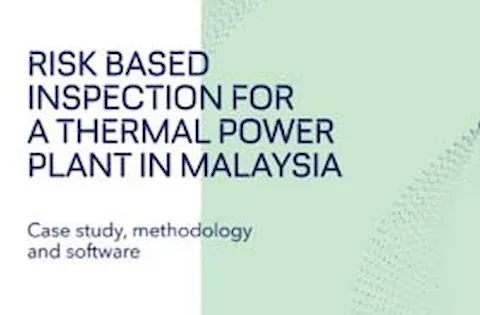Read the case study of a coal-fired power plant RBI
Risk Based Inspection (RBI) methodologies for thermal power plants are known in Europe, especially since the RIMAP project which produced RBI workbooks for several industries, including the power industry. Fewer cases are known on the application of the RBI methodology in power plants outside Europe, with Malaysia being a notable exception. Favourable regulatory framework has allowed application of the methodology in several Malaysian thermal power plants since 2004.
The API RP 581/580 standards have been used as a starting point for the methodology but extensions have been developed to allow handling of specific requirements of the power industry. This included additional mechanisms such as creep and fatigue, as well as additional equipment types, modified asset hierarchy and modified assessment steps to make the approach more suitable for thermal power plants. Specific software for Power Plant RBI was developed for a number of years but because of an aging architecture, maintenance of the application has progressively become more difficult. The decision has therefore been taken to rewrite the software based on DNV’s Risk Framework Architecture, which allows sharing of calculation components and very efficient development of a modern program.
The updated RBI methodology has been applied to a number of power plants. The case study of a coal-fired power plant RBI is described in this paper. The application of the methodology is explained through this case study and risk results are presented together with the resulting inspection plan. The paper also shows that this methodology can meet Malaysia’s Factories and Machinery SSI (Special Scheme of Inspection) RBI Regulations of 2014 and it can be used to set flexible inspection intervals without compromising the safety and integrity of the plant.
You may download the case study, and learn more about RBI below.

Risk based inspection: Thermal power plant
Download the case study